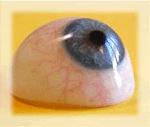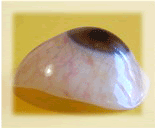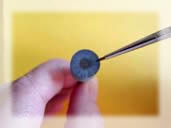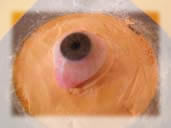PROSTHETIC EYES
Prosthetic eyes are crafted individually by our institute. They are made in the presence of the patient using special glass or acrylic. It is our most important goal to always achieve the best results for our patients.
PROSTHETIC EYES MADE FROM SPECIAL GLASS
Artificial eyes made of special glass have been worn for generations without any problems. The unique surface characteristics of this type of artificial eye are based on the use of crinoline which is processed under high temperatures. The composition of the surface is also the reason why many wearers of prosthetic eyes prefer the prosthetic eye made of special glass.

Glass fiber stems used for drawing
| Scientific examinations proved the advantages of Cryolith glass. Due to the special manufacturing procedures, the surface is completely smooth and thus is superior to prosthetic eye surfaces made of other materials. This results in a very comfortable fit for our patients. |
|
This fact has now been proven by microscopic raster examinations to support our arguments and comparison between glass and synthetic materials.
The moistening characteristics of the special glass is another big advantage towards synthetic materials. The tear fluid creates a thin film between the eye surface and the tissue of the orbita preventing any friction. Cryolith glass is very resistant against tears. The special glass has a better shine and makes the glass eye looking more natural because the surface is wetted naturally by the eye lid. For this reason, patients who wear a prosthetic eye do not need to use any wetting fluids.
THE MAKING OF THE ARTIFICIAL GLASS EYE
The optimal fitting of the prosthetic eye is only possible in the presence of the patience and the prosthetic eye is manufactured in a sitting of about 1 to 2 hours requiring multiple processes. Handmade half-finished artificial eyes made of Cryolith glass are carefully selected by the oculist to match the color of the patient’s eye. A demanding procedure is then required to finish the prosthetic eye. A wide range of appropriate colours, patterns and sizes is available with different diameters of the iris and the pupil. |
|

Selection of half finished eyes
With a Bunsen burner which is fired with a mixture of gas and air, the oculist shapes the half-finished eye. The fine veining of the sclera, individual shading and patterns are matched with the other eye melted on the surface with the glass fiber stems during the process.
|
|
|
Glass prosthetics can be finished as reform eyes (double walls) or shell prosthetics (single wall).
|
|
THE PROSTHETIC EYE MADE OF ACRYLIC
The making of a prosthesis from acrylic needs more time than the making of an artificial eye made of special glass.
During the first visit of the patient with the ocularist, the form as well as the color and size of the iris are determined based on the natural eye. After this the colour of the iris is drawn on an iris button while the patience is present and a wax model is manufactured according to the eye socket.
|
|
The exact shape of the newly manufactured prosthesis is fitted again to the socket by the ocularist during a second appointment.


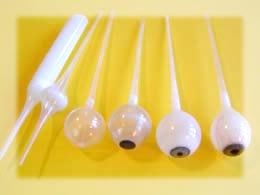 Cryolith glass
Cryolith glass 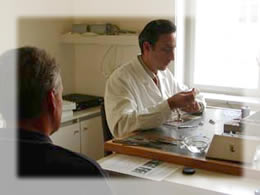
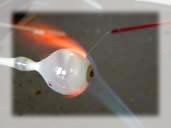
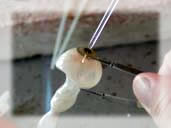 Reform eye
Reform eye 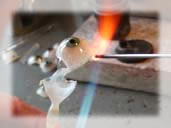 prosthetic shell
prosthetic shell 